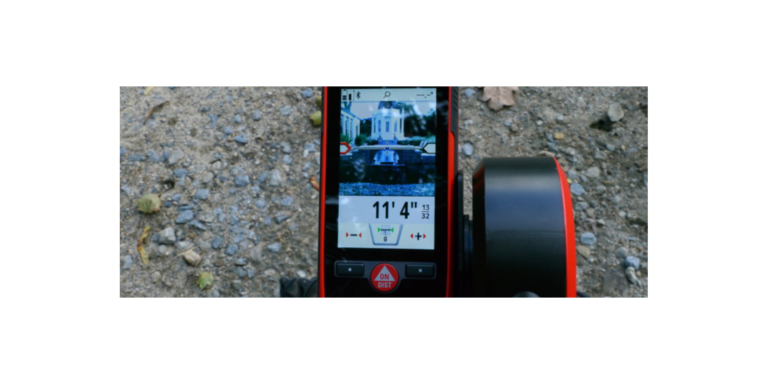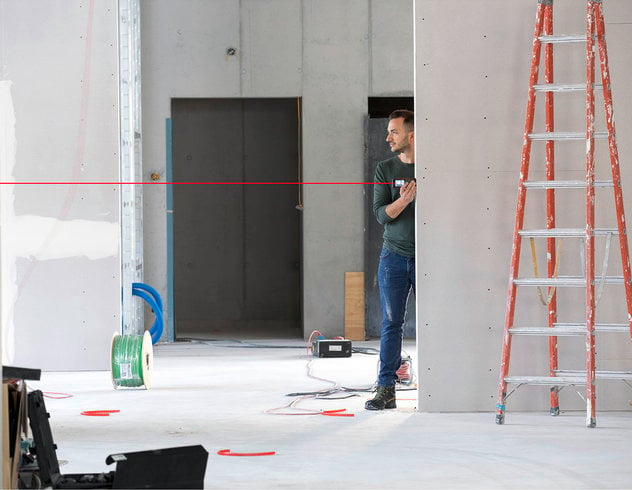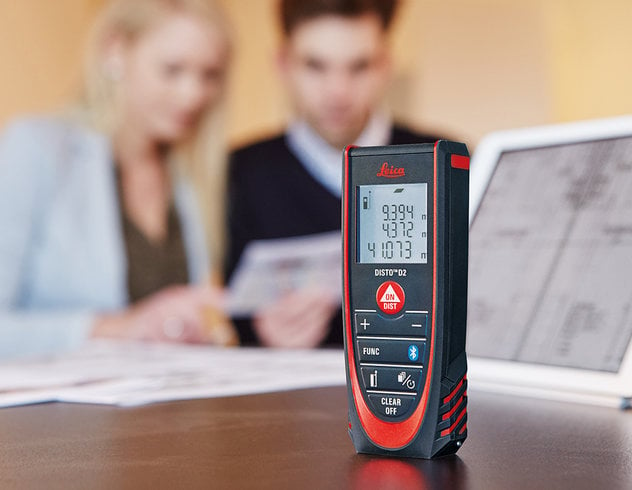This is infrequently used content, but to expand accessibility to a wider audience we are using a machine for translation. Please excuse any unanticipated translation errors. -Thank you, Leica Geosystems.
Which measuring technology does Leica DISTO™ use?
The distance measurement with the Leica DISTO™ is based on the phase measurement principle. The laser diode emits light pulses with a defined wavelength and pulse repetition frequency. Due to the runtime difference between the internal reference path and the external measurement path, the light pulses, reflected on a target and received from the Leica DISTO™, have experienced a phase shift in relation to the light pulses received through the internal reference path. That phase difference between those two signals is proportional to the distance between instrument and target.
The receivers convert the optical signals into electronic signals and the analog-digital-converters (ADC) of the micro controller convert them into digital signals. The built in micro controller calculates the phase difference between the reference signal and the measurement signal. If the phase difference is higher than 360°, for example 410°, then the micro controller would calculate a distance corresponding to 50°. To avoid such an error the pulse repetition frequency of the laser light pulses has to be reduced and a second measurement, a socalled coarse frequency measurement, has to be executed. Depending on the specified measurement range of the instrument various coarse frequencies have to be used to calculate the correct distance.
Accuracy of the instrument
The accuracy of a laser distance measurer based on the phase measurement principle is depending on the precision of the crystal oscillator inclusive temperature compensation, the jitter compensation of the frequency synthesizer, the crosstalk between different signal pathes, the signal to noise ratio of the received light and the time the signal is sampled into the micro controller.
Concerning the last point it is worth to mention that in case of the fine measurement (using the highest frequency) a shorter sampling time results into a higher measurement jitter of a few millimetres between various measurements on the same target. In case of a coarse measurement (using one of the lower frequencies) a shorter sampling time could result into a coarse measurement error of various hundreds of millimetres.
Therefore it has to be evaluated very carefully how to balance sampling time versus accuracy. For all possible measurement conditions concerning the distance to the target, the surface characteristics of the target and the background illumination, the sampling time has to be determined in such a way that on the one hand the measurement time is as short as possible and on the other hand a coarse measurement error is completely avoided. This means that under difficult measurement conditions a shorter measurement time leads to a higher risk for a measurement error. (More here.)
Can I perform an indirect measurement (Pythagoras) while holding the instrument in my hand?
Yes, but be aware that the result is more of an estimate than an exact measurement. To obtain good results use a tripod. To keep the center of rotation steady, we offer special adapter plates.
Can Leica DISTO™ send an analogue signal?
No. The only way is using a digital-to-analog converter.
What about the measuring technology?
The distance measurement with the Leica DISTO™ is based on the phase measurement principle. The laser diode emits light pulses with a defined wavelength and pulse repetition frequency.
Due to the runtime difference between the internal reference path and the external measurement path, the light pulses, reflected on a target and received from the Leica DISTO™, have experienced a phase shift in relation to the light pulses received through the internal reference path. That phase difference between those two signals is proportional to the distance between instrument and target.
How can I measure outdoors with a Leica DISTO™?
When there are cloudy weather conditions or twilight there will be no problem. If there is a lot of sun you will hardly be able to see the laser dot. We therefore recommend for distances up to 15m the use of a laser goggles by which the red glas the laser dot will be better visible. The more professional solution is to use a Leica DISTO™ D5 or D8 with integrated digital poitfinder and 4x magnification. This will make it much easier to measure up to 200m range. With this instruments you don't need to see the laser dot but the haircross allows you to see where you are targeting.



